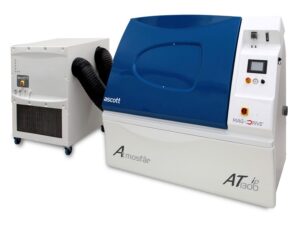Scania STD 4445 Corrosion Testing Standards

Scania STD 4445 Accelerated Cyclic Corrosion Testing in our Atmosfar Chambers at Aerofin Labs UK.
The test standard summaries are for general guidance only. Though believed to be accurate at the time of writing, this may change over time. This information should not be used as a substitute for referring to a complete test standard, at an appropriate revision level.
Please Note: the terms salt spray, salt mist and salt fog are all in wide spread use within corrosion test standards. In this context they can be considered to be equivalent and interchangeable terms.
Scania STD 4445
Scania Accelerated Corrosion Test

Scania STD 4445 Corrosion Testing Standards – Accelerated Cyclic Corrosion Testing by Aerofin Labs UK
This test procedure serves as a general purpose atmospheric corrosion test and can be applied to a wide variety of materials, coatings and interactions of materials. It has been developed to allow the evaluation of the corrosion resistance of metals in environments where there is a significant influence of chloride ions, mainly as sodium chloride from a marine source or by winter road de-icing salt. This test is cyclic in nature, i.e. test specimens are exposed to changing climates over time.
Test specimens are placed in one of our enclosed Atmosfar Chambers and exposed to a changing climate. The first 5 days comprise of the following 3 part repeating cycle. 6.0 hours exposure to a ‘wet’ climate of no less than 95% RH, at +25°C, with intermittent exposure to salt solution.
This is followed by 2.5 hours climate controlled transition to 50°C & 70% RH. This is followed by 15.5 hours exposure to a constant climate of 50°C & 70% RH.
The final 2 days comprise of 48.0 hours exposure to a constant climate of 50°C & 70% RH. This completes the total 7 day test cycle. The number of cycle repeats and therefore the test duration is variable.
This test is also referred to as a Cyclic Corrosion Test, often abbreviated to CCT, and is based on Volvo 423-0014.


